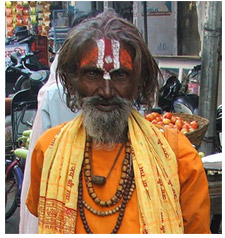|
|

|
|

|
|||
|
 aid
down the law for the Hindus and have had a profound influence on their
life and behaviour. Great movements of reform have also originated from
these citadels, which influenced and changed the social structure of the
society. aid
down the law for the Hindus and have had a profound influence on their
life and behaviour. Great movements of reform have also originated from
these citadels, which influenced and changed the social structure of the
society.
The broad hierarchy in the Hindu social system were the Brahmins, Kshatriyas, Vaishyas, Shudras and achhuts or untouchables. Further division based on occupation gave rise to castes like nai (barber), dhobi (washer man), lohar (blacksmith), darzi (tailor) and all of them formed a vital part of the village economy and life.
Under economic pressure some Brahmins in Eastern Uttar Pradesh, way back in an undetermined past, took to tilling the land themselves. This was a taboo for Brahmins in this area and they became outcastes. A separate sub-caste, which is lower than the full blooded Brahmins in hierarchy but higher than the Kshatriyas, thereby came into existence, known as Bhumihars. Several other of Khatris and Bishnois can be cited. These arose out of an intermixture of blood and other factors. The rigid caste attitude in the past and the social and political tensions have resulted in the growth of large settlements of particular castes in compact regions in Uttar Pradesh. Thus there are a large pockets of Ahirs, Gujars, Kurmis, Bhumihars and so on in different parts. The scheduled castes and the Harijans have their own settlement everywhere. The village leadership is in the hands of the upper castes while in the Urban areas, the trading class (Vaishyas), with plenty of money to spend, is a well-knit community and has a large say in the direction of affairs. |
|||